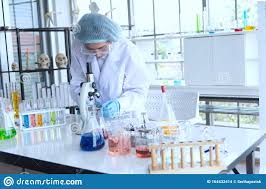Certificate in Ayurveda Massage course is available at Disha Arogya Dham.
After the course you can open your own centre.
That sounds like an interesting opportunity! Disha Arogya Dham offers a Certificate in Ayurveda Massage, which can provide you with the skills and knowledge needed to open your own center. Ayurveda massage is a traditional Indian practice that focuses on holistic healing and wellness, and there is a growing demand for such services.
Here are a few steps you might consider if you’re planning to take the course and eventually open your own Ayurveda massage center:
1. **Research the Course Details**: Look into the curriculum, duration, fees, and any prerequisites for the Certificate in Ayurveda Massage course at Disha Arogya Dham. Ensure it aligns with your career goals.
2. **Enroll in the Course**: Register for the course and commit to completing it. Make sure to take full advantage of the training and practical sessions provided.
3. **Gain Practical Experience**: While taking the course, seek opportunities to practice your skills. This could be through internships, volunteer work, or practicing on friends and family.
4. **Understand the Legal Requirements**: Research the legal and licensing requirements for opening a wellness or massage center in your area. This may include obtaining a business license, insurance, and health and safety certifications.
5. **Create a Business Plan**: Develop a comprehensive business plan outlining your services, target market, pricing strategy, marketing plan, and financial projections.
6. **Set Up Your Center**: Find a suitable location for your center, and invest in the necessary equipment and supplies. Create a calming and welcoming environment for your clients.
7. **Market Your Services**: Use both online and offline marketing strategies to attract clients. This could include creating a website, using social media, attending wellness fairs, and building partnerships with local health and wellness businesses.
8. **Continuing Education**: Stay updated with the latest trends and techniques in Ayurveda massage and holistic wellness. Consider taking advanced courses or attending workshops to further enhance your skills.
Taking the Certificate in Ayurveda Massage course is a great first step towards a rewarding career in holistic health and wellness. Good luck!
Absolutely, pursuing the Certificate in Ayurveda Massage course at Disha Arogya Dham is indeed a valuable first step. Here’s a summary of the path you might take:
1. **Foundation Course:**
– **Certificate in Ayurveda Massage at Disha Arogya Dham:**
– This course will provide you with the fundamental knowledge and skills in Ayurvedic massage techniques.
– You’ll learn about the basic principles of Ayurveda, including the doshas (Vata, Pitta, Kapha), and how to balance them through massage.
– Practical training in various massage techniques and understanding the benefits of each.
2. **Advanced Training:**
– After completing the certificate course, consider enrolling in advanced training programs to deepen your knowledge and skills.
– **Diploma in Ayurvedic Massage and Panchakarma Therapy:**
– This program typically covers more comprehensive therapies and advanced massage techniques.
– You’ll learn about Panchakarma (detoxification and rejuvenation therapies) and their applications.
3. **Specialization:**
– Once you have a solid foundation and some advanced training, you might want to specialize in specific areas of Ayurvedic massage or therapy.
– **Specialized Workshops or Courses:**
– Look for workshops or short courses focusing on specific techniques like Marma therapy, Shirodhara, or Ayurvedic facials.
– This can enhance your skill set and allow you to offer more specialized services to clients.
4. **Clinical Experience:**
– Gaining practical experience is crucial for becoming proficient.
– **Internship or Apprenticeship:**
– Consider interning at a reputable Ayurvedic clinic or wellness center to gain hands-on experience under the supervision of experienced practitioners.
– This will help you apply your theoretical knowledge in real-world settings and refine your techniques.
5. **Continuous Education and Certification:**
– Ayurveda is a vast field with ongoing research and developments.
– **Continued Professional Development:**
– Participate in continuing education programs, attend seminars, and stay updated with the latest advancements in Ayurveda and massage therapy.
– Obtaining additional certifications from recognized Ayurvedic institutions can enhance your credibility and career prospects.
6. **Starting Your Practice:**
– Once you feel confident in your skills and knowledge, you can start your practice.
– **Setting Up Your Practice:**
– Decide whether you want to work in a wellness center, start your own clinic, or offer mobile services.
– Ensure you have the necessary equipment, a comfortable and serene environment for clients, and the appropriate licenses and insurance.
7. **Networking and Professional Growth:**
– Building a network within the Ayurvedic community can be beneficial for your growth.
– **Join Professional Associations:**
– Become a member of professional associations related to Ayurveda and massage therapy.
– This can provide opportunities for networking, professional growth, and staying updated with industry standards.
By following these steps, you’ll be well on your way to building a successful career in Ayurvedic massage therapy, starting with the foundational training at Disha Arogya Dham.







